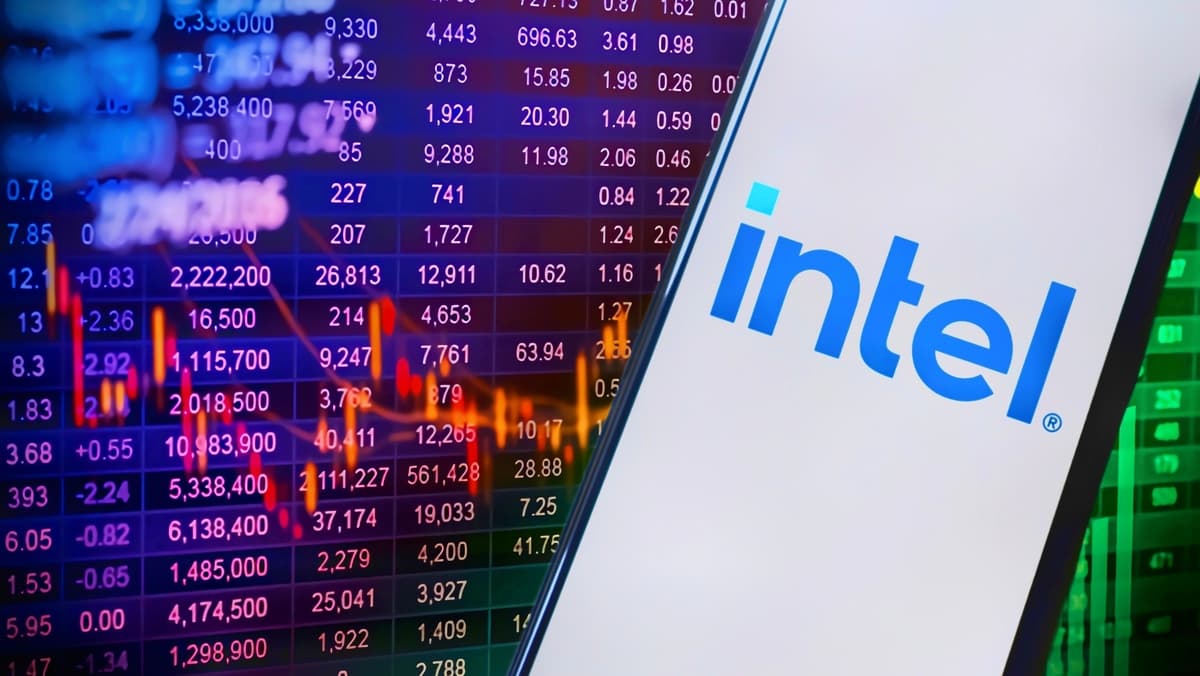Intel Stock Surges as Strong Q3 Earnings Beat Expectations, Fueled by AI Growth- Intel Corp. (NASDAQ: INTC) shares surged as much as 7% in after-hours trading on Thursday following the release of its third-quarter earnings report, which handily beat Wall Street’s expectations on both revenue and profit.
The results mark a notable rebound for the chipmaking giant as it pushes deeper into artificial intelligence (AI) and advanced manufacturing — two areas seen as critical to its long-term revival amid fierce competition from Nvidia, AMD, and TSMC.
Revenue and Profit Exceed Projections
Intel reported $13.7 billion in revenue for the quarter ended September 27, surpassing analyst estimates of $13.15 billion, according to data from Bloomberg. The figure also represents an increase from $13.28 billion during the same period last year.
Earnings came in far stronger than anticipated, with adjusted earnings per share (EPS) of $0.23, easily topping Wall Street’s projection of $0.01. The results contrast sharply with the $0.46 loss per share Intel posted in the third quarter of 2024 — highlighting a meaningful turnaround for the company.
CEO Lip-Bu Tan credited the improvement to rising demand for computing power driven by AI applications. “AI is accelerating demand for compute and creating attractive opportunities across our portfolio,” Tan said in a statement. “Our strategic focus on manufacturing innovation and AI-centric products is beginning to show tangible results.”
AI and Manufacturing at the Center of Intel’s Comeback
After several years of challenges — including manufacturing delays, declining market share, and leadership changes — Intel appears to be regaining its footing under Tan’s leadership. The company is repositioning itself as both a chip designer and manufacturer, expanding capacity through its Intel Foundry Services (IFS) division.
This manufacturing arm is expected to play a key role in Intel’s broader strategy to compete with Taiwan Semiconductor Manufacturing Company (TSMC), which currently dominates global semiconductor production.
At the same time, Intel is ramping up efforts in AI hardware and software, seeking to benefit from the same generative AI boom that has propelled Nvidia to record-breaking profits. The company’s upcoming products — including its Gaudi AI accelerators and Core Ultra processors — are being closely watched as indicators of whether Intel can successfully capture part of the lucrative AI market.
Market Reaction: Optimism Returns
Investors responded swiftly to the upbeat results. Intel’s stock jumped roughly 7% in after-hours trading, extending gains the stock has made over the past several months.
Analysts noted that the company’s performance signals a stabilization of its business after a turbulent period marked by shrinking PC demand and intensifying competition.
“Intel’s results suggest its turnaround plan is finally gaining traction,” said Michael Brewster, a semiconductor analyst at TechEdge Research. “The AI narrative is no longer just hype — it’s starting to show up in their numbers.”
Still, some experts remain cautious, pointing out that Intel’s margins remain under pressure compared to rivals, and that execution risks persist as it attempts to rebuild its foundry capabilities.
A Competitive Industry Landscape
The broader semiconductor industry continues to evolve rapidly, fueled by the explosion of AI technologies and global investments in chip manufacturing.
Rival Nvidia has maintained a commanding lead in AI chips, with its high-end GPUs powering most of the world’s major data centers and AI models. AMD has also gained ground in both gaming and data center markets, while TSMC remains the manufacturing backbone for many of these chipmakers.
Intel’s challenge lies in catching up technologically while diversifying its business model to serve external customers through its foundry services. The company’s recent partnerships with firms like Arm Holdings and Microsoft are seen as early signs that Intel’s manufacturing comeback is resonating with major players in the industry.
Future Outlook and Strategic Priorities
Looking ahead, Intel plans to continue investing heavily in next-generation fabrication plants in the United States and Europe — part of its “IDM 2.0” strategy aimed at revitalizing its global manufacturing leadership.
The company is also counting on new product launches in 2025 to sustain momentum. Its Lunar Lake and Arrow Lake chips are expected to deliver improved power efficiency and performance for laptops and desktops, while its data center lineup will target enterprise AI workloads more aggressively.
Despite recent headwinds, CEO Tan emphasized that Intel remains committed to transforming its business for the AI era. “We’re building a company positioned for the next decade of computing — from the edge to the cloud,” he said.
Final Thoughts
Intel’s latest earnings report signals a renewed sense of confidence in one of America’s most iconic tech companies. After years of lagging behind competitors, Intel’s turnaround plan — anchored in AI innovation and manufacturing excellence — appears to be gaining momentum.
If the company can maintain this trajectory, it could reclaim a central position in the global semiconductor ecosystem and reassert itself as a key player in the rapidly evolving AI-driven computing landscape.
For now, investors are optimistic — and Intel’s strong Q3 results may mark the beginning of a new chapter for the Silicon Valley giant.
Consumer Reports Finds Dangerous Levels of Lead in Popular Protein Powders and Shakes | Maya




